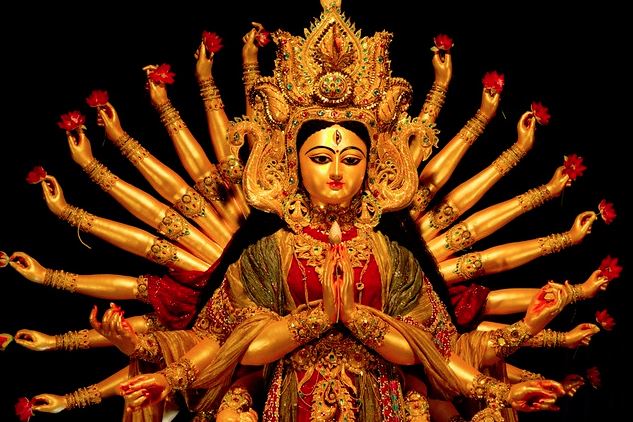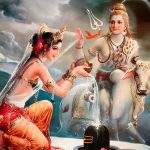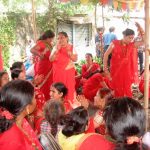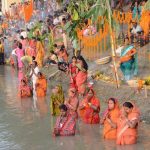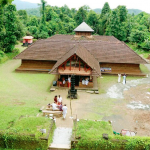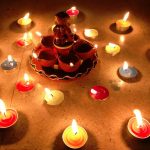In India, festivals occur every month of the year. The Hindu calendar is filled with days of celebrations, ceremonies, and worship. Durga Puja is one of the major festivals for Hindus, and it is celebrated in various forms all across the country.
This Festival celebrates the victory of Goddess Durga over an invincible demon. It is significant for all Hindus, but it is the most important festival for Bengalis.
What is Durga Puja?
Durgotsav celebrates the Divine in the feminine form. She is Goddess Durga, the vanquisher of demons and the destroyer of evil. She is also the benign Mother who protects everyone, irrespective of caste or creed.
This festival occurs in the Hindu Month of Aswini (September-October). It is a 10-day long celebration. The festival culminates on the tenth day. At this time, the Goddess kills the Demon Mahishasura, who had been harassing the good and innocent people.
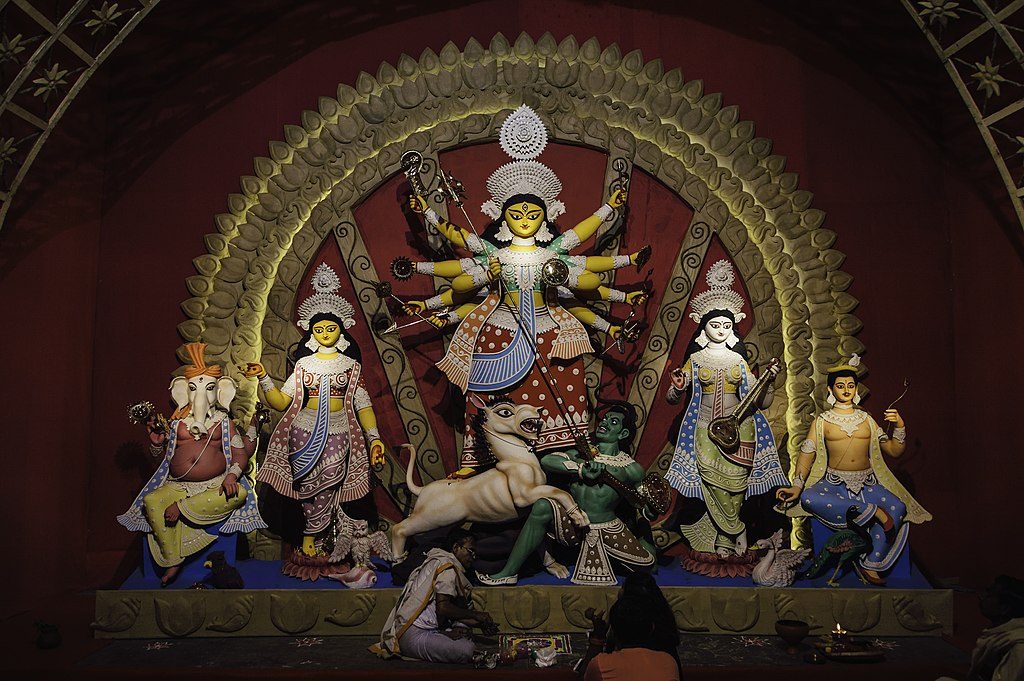
Across India, Durga Puja is also celebrated as Navratri. Devotees worship the Divine Mother in her various forms. They specifically hail her as Maha Shakthi, Maha Saraswathi, and Maha Lakshmi. This Puja has a special significance for the people of Eastern India, especially in Bengal, Assam, and Odisha.
The Legends
Durga Devi is a form of Parasakthi, the supreme power in the female form. She manifests herself as Saraswathi, Lakshmi, and Parvati, who are the consorts of Brahma, Vishnu and Shiva respectively.
Why We Celebrate Durga Puja
In ancient times, a demon called Mahishasura terrorised the people. He had the head of a Buffalo and the body of an Asura. Mahisha means Buffalo, so he was called Mahishasura. As he wanted to become immortal, he meditated and performed severe penance to please Lord Brahma. Brahma appeared before him and Mahishasura asked for the boon of immortality. This boon was denied as it was ordained that all creatures that were born had to die. As a result, Mahishasura asked that no man should ever be able to kill him. He was convinced that no woman would ever be able to stand before him in combat. So he felt that he had achieved virtual immortality.
Drunk with power, he soon began to harass all other creatures. When his atrocities began to escalate, the Devas appealed to Shiva and Vishnu. Knowing his boon, Brahma, Vishnu, and Shiva combined their powers. Following this, Parvati, Lakshmi, and Saraswati also added their energy. All these powers then combined to form a beautiful and powerful warrior goddess. She was named Durga, the Invincible.
Sculptures and paintings depict Devi Durga as a beautiful female warrior, with multiple arms holding different weapons. Her vaahan is a lion or a tiger.
Durga Puja – Celebrating Mahishasura Mardhini
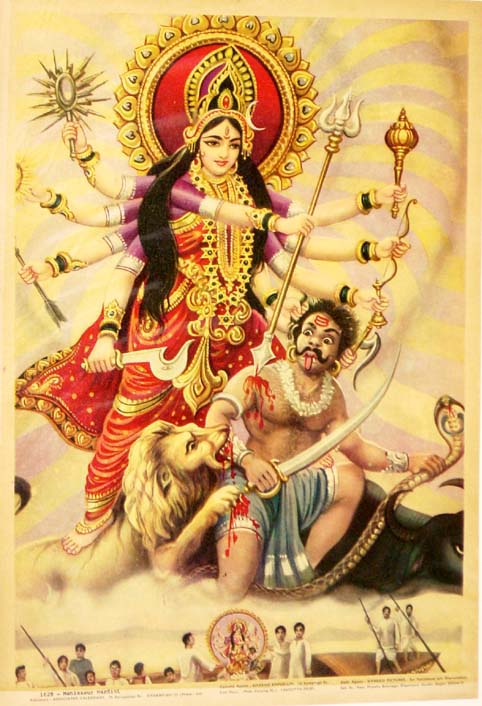
Devi Durga then challenged Mahishasura. She also created Kali, Chamundi, Mahamaya, and other forms of her divine energy. With this army, she quickly destroyed Mahishasura’s Army. Devi Durga finally killed the demon on Vijayadasami Day. Thus, she came to be known as Mahishasura Mardhini, the slayer of Mahishasura. Hindus celebrate this occasion as Navratri, Dussehra and Durga Puja.
The Festival
Navratri, Dussehra or Durga Puja – all denote the same festival, a celebration of the female form of the divine, as a warrior goddess who triumphs over evil. This festival always falls in the Ashwini Month (September-October) of the Hindu calendar.
This is a 10-day long celebration. The Hindu calendar is based on the moon. Navratri officially begins on Mahalaya Day. This is the last day of the previous phase of the moon, the dark phase. The next day is the first day of Shukla Paksha. This phase is the bright phase of the moon. In Bengal, Devi Paksha is the name of this phase. This marks the beginning of the celebration of Durga Puja.
Devotees install huge idols of Durga Devi for display in Durga Puja Pandals. Following which, huge crowds then gather for worship and celebration. People believe the Goddess comes down to bless them on the first day of the Devi Paksha and stays till Vijaya Dashami. Vijaya Dashami is the tenth day of the festival. The ten-day festivities end on this day. Consequently, on the new moon day or Poornima, devotees in Bengal celebrate the Kojagori Lokkhi Puja or Lakshmi Puja.
Over the nine days of Navratri, devotees worship the Goddess in her three main forms – Durga, Saraswati, and Lakshmi.
The festivities and celebrations escalate during the last five days of the ten-day period, from Shashti or the sixth day of Devi Paksha. This five-day period is the central part of the Durga Puja. Shashti, Maha Saptami, Maha Ashtami, Maha Navami and Vijayadashami are the most auspicious days in the festival. Vijayadashami is also the day when Devi Durga vanquished the almost indestructible Mahishasura.
Where is it Celebrated?
Navratri is the special festival in the month of Ashwini (September-October). While the festival officially commences on Mahalaya, it goes on for ten more days. Navratri is a festival that is celebrated all across India, from the North to the South.
In Andhra Pradesh, Telangana, and Tamil Nadu, people celebrate it as Kolu. Families set up a display of dolls in specially arranged steps. In general, these dolls range from kid’s toys to statues and figures of the Divine. Meanwhile, the people of Karnataka celebrate it as Dussehra. At this time, Mysore Palace becomes the venue for spectacular Navratri festivities. Also, a procession of the deity takes place in Mysore.
In the meantime, the festivities in Kulu Valley of Himachal Pradesh closely resemble the Durga Puja celebrations of Bengal. Here, it is celebrated as Kullu Dussehra
Similarly, in Gujarat, Maharashtra and other Western Indian states, it is celebrated as Navratri, with special public and private ceremonies.
People of the Eastern States, especially in Bengal, call it Durga Puja. It is also called Durgotsav. Devotees set up Durga Puja Pandals everywhere. These finely decorated Pandals display large statues of the Goddess. Everyone, irrespective of their social background take part in the festivities. On the last day, devotees take the statues in processions and immerse them in large water bodies.
Another key point is that, the sculptors use clay, plant-based paints, and other biodegradable materials to create the statues. This is done so that the statues dissolve quickly when immersed in water. Devotees also believe this increases the sanctity of the water.
Durga Ashtami Puja
The eighth day of Navratri or Dussehra is the Ashtami day. This is the day of Maha Ashtami. On this day, Durga manifests herself as Gauri, a benign form. During Durga Ashtami Puja, people worship the Ashtakannikas or eight Shaktis. Devotees see young female children as representations of Devi Durga. So, people invite young girls to their homes and worship them as the Goddess, offering them grand feasts. Devotees also perform this ceremony called Kanya Puja on Mahashtami and Mahanavami days.
Durga Puja Timing
This festival begins each year on Mahalaya Day in Ashwin Month. Durga Puja Date in 2019 is as follows:
| Date | Day of Week | Event |
| 29/Sep/2019 | Sunday | Mahalaya |
| 03/Oct/2019 | Thursday | Maha Panchami |
| 04/Oct/2019 | Friday | Maha Shashti |
| 05/Oct/2019 | Saturday | Maha Saptami |
| 06/Oct/2019 | Sunday | Maha Ashtami |
| 07/Oct/2019 | Monday | Maha Navami |
| 08/Oct/2019 | Tuesday | Vijaya Dashami |
Significance of the Festival
Hindus all across India celebrate Navratri or Dussehra. This festival glorifies women and is dedicated to Goddess Durga. It is also the most important festival of the year for Bengalis, who celebrate it with great pomp and show.
Idol makers create large and beautiful handcrafted figures of Devi Durga. The entire idol would be ready except for the eyes. On Mahalaya Day, the sculptor draws the eyes of the idol with reverence and devotion. Chokku Dhan is the name of this ritual. Following this, the idols can be installed on the Durga Puja Pandals.
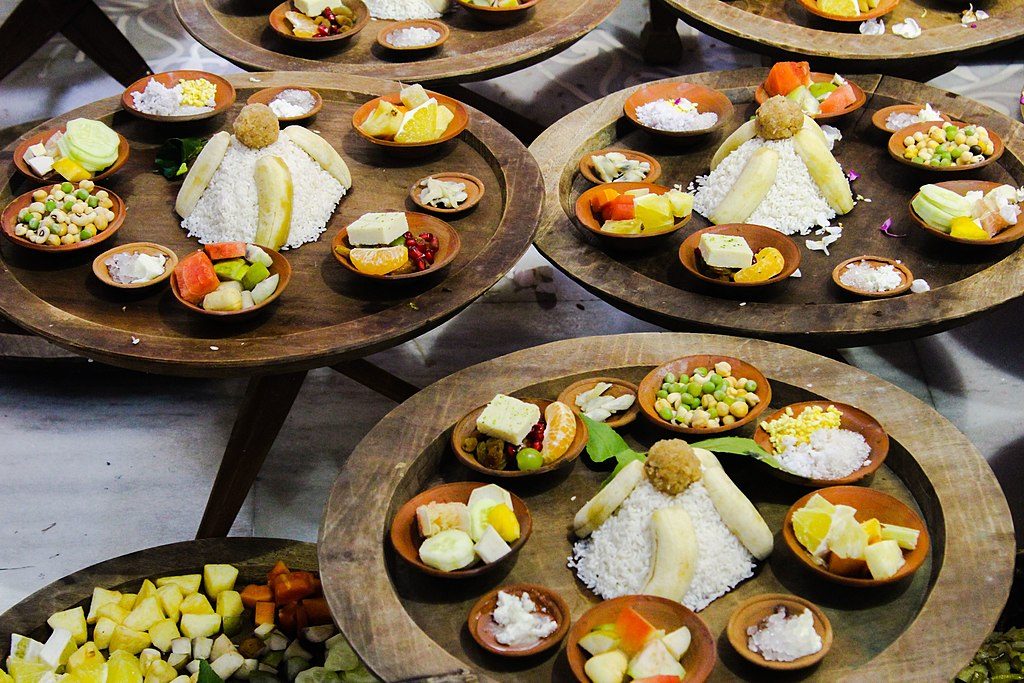
Groups of devotees set up elaborately decorated Pandal in various places. Food stalls and other shops are also set up around these Pandals. Dance, music performances and other celebrations attract both tourists and devotees alike. Besides celebrating women, this festival also reveres nature. Worshippers drape a white saree over a banana plant and place it beside a Lord Ganesha Idol. The banana wrapped in a white saree represents his consort. On Maha Saptami day they worship Devi Durga with nine different plants known as nabapatrika. These nine plans represent the nine different forms of Durga.
Social Relevance
Traditionally, Durga Puja Festival also promotes social equality. In Bengal, craftsmen make Durga idols from soil and clay taken from the banks of the river Ganga. Besides this, they also add soil from usually forbidden areas. For instance, they once added soil taken from the house of a courtesan. As a result, Benglis hail this festival as sarbojanin, a festival for all people.
Devi Durga as a warrior goddess vanquishes the demon Mahishasura. This signifies the triumph of good over evil. Ancient texts refer to Durga as the divine consciousness and the deity of cosmic intelligence.
During the Independence movement, Durga Puja gained prominence. In the Indian freedom movement, patriots portrayed India as Bharat Mata, a form of the divine mother. As a result, Durgotsav festivities attained special significance during this period.
To Conclude
Durga Puja or Navratri celebrates Parasakthi in her fierce Warrior aspect, as the punisher of Evil. It also worships her as the divine mother who blesses her devotees. Durga Puja is also a social event that promotes equality and erases differences in the minds of devotees. This grand celebration in Bengal attracts tourists from across India and from other countries. The lovely idols, the beautifully decorated Pandals, music and dance performances, and the various food stalls are the major attractions. If you are planning on visiting any of the Eastern states, especially Bengal – plan your trip during Durga Puja. Take part in the festivities and get the blessings of Maa Durga.




